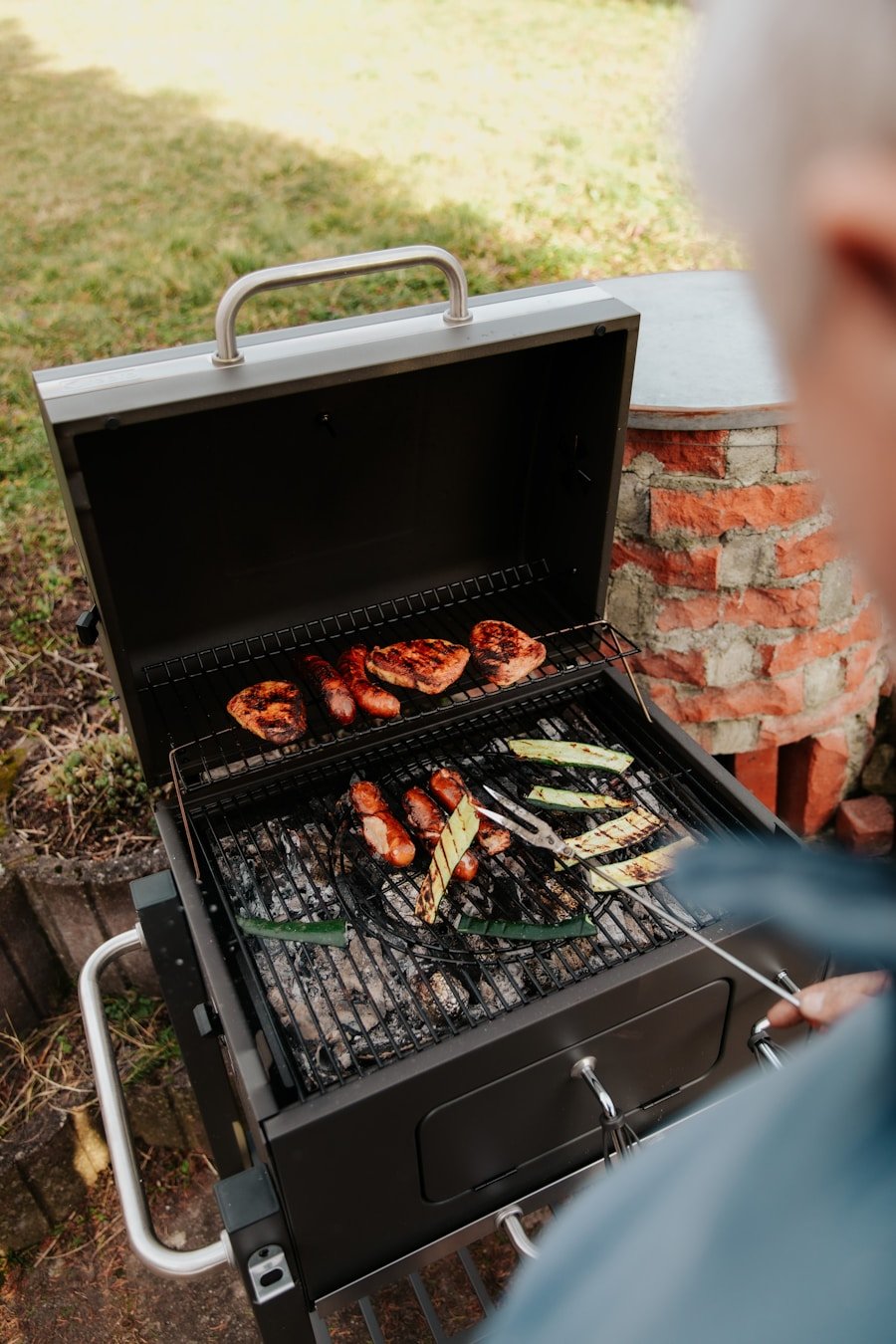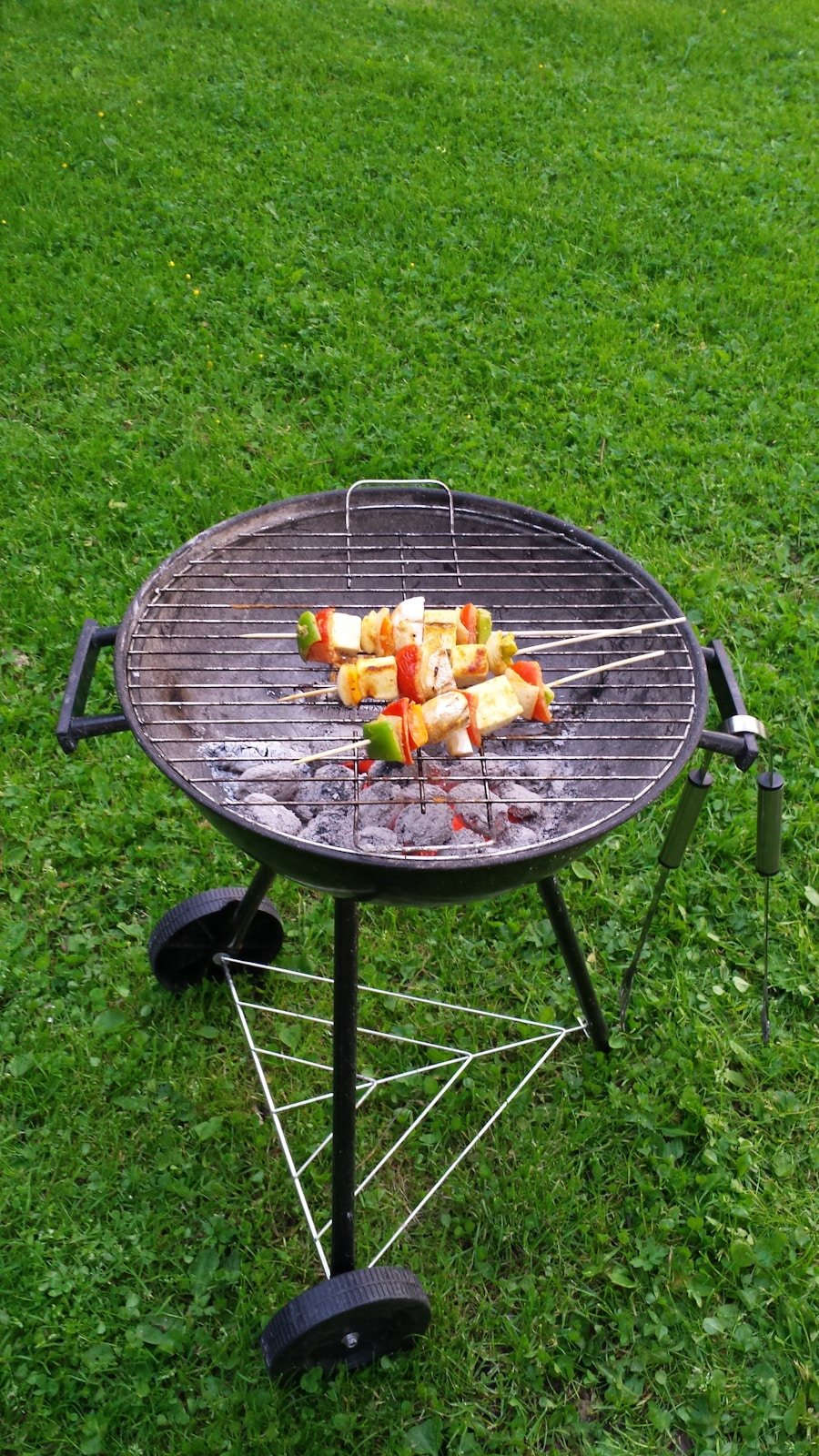Gas grilling has become a popular method for outdoor cooking, offering convenience and efficiency that charcoal grilling often lacks. At its core, a gas grill operates using propane or natural gas, which is ignited to produce a flame that cooks food. The simplicity of turning a knob to ignite the grill and adjust the heat makes it accessible for both novice and experienced grillers alike.
Unlike charcoal grills, which require time to heat up and can be messy, gas grills provide instant heat and are generally easier to clean. This ease of use has contributed to the widespread adoption of gas grills in backyards across the country. Understanding the components of a gas grill is essential for maximizing its potential.
Most gas grills consist of burners, a cooking grate, a heat diffuser, and a control panel. The burners are responsible for generating heat, while the cooking grate is where food is placed. The heat diffuser helps distribute heat evenly across the cooking surface, preventing hot spots that can lead to uneven cooking.
Familiarity with these parts allows grillers to troubleshoot issues and optimize their grilling experience. Additionally, knowing how to maintain these components ensures longevity and consistent performance.
Key Takeaways
- Gas grilling involves using propane or natural gas to create heat for cooking food
- Preparing the grill by cleaning the grates and checking for gas leaks is essential for optimal performance
- Different foods require different heat settings, with high heat for searing and low heat for delicate items
- Direct heat is best for quick-cooking foods, while indirect heat is ideal for slow-cooking and larger cuts of meat
- Mastering the art of flipping and turning food on the grill is crucial for even cooking and perfect grill marks
Preparing the Grill for Optimal Performance
Before grilling, proper preparation of the gas grill is crucial for achieving optimal performance. Start by ensuring that the grill is clean; this involves removing any leftover food particles or grease from previous grilling sessions. A clean grill not only prevents flare-ups but also enhances the flavor of the food being cooked.
Use a grill brush to scrub the grates thoroughly, and consider using a mixture of vinegar and water to wipe down surfaces. Regular maintenance, including cleaning the burners and checking for clogs, will keep the grill functioning efficiently. Once the grill is clean, it’s important to check the fuel supply.
If using propane, ensure that the tank is full and properly connected. For natural gas grills, inspect the hose for any signs of wear or leaks. A simple soap and water solution can be applied to the connections; if bubbles form, there may be a leak that needs addressing before proceeding.
After confirming that everything is in order, preheat the grill for about 10-15 minutes with the lid closed. This step not only helps eliminate any residual odors but also ensures that the cooking surface reaches the desired temperature before food is placed on it.
Choosing the Right Heat Setting for Different Foods

Selecting the appropriate heat setting is vital for achieving perfectly grilled food. Gas grills typically offer a range of heat settings from low to high, each suited for different types of food. For instance, delicate items like fish or vegetables benefit from lower heat settings, which allow for gentle cooking without burning.
Conversely, thicker cuts of meat such as steaks or pork chops require higher temperatures to achieve a good sear while locking in juices. Understanding how different foods react to heat can significantly impact grilling results. For example, when grilling chicken breasts, starting on high heat can create a beautiful crust on the outside while finishing on lower heat ensures that the inside cooks through without drying out.
Similarly, when grilling burgers, a high heat setting is ideal for creating a caramelized exterior while maintaining a juicy interior. By mastering these heat settings, grillers can elevate their culinary creations and impress guests with perfectly cooked dishes.
Using Direct and Indirect Heat for Perfect Grilling
| Grilling Method | Temperature Range | Cooking Time |
|---|---|---|
| Direct Heat | 350°F – 450°F | Shorter |
| Indirect Heat | 250°F – 350°F | Longer |
The concepts of direct and indirect heat are fundamental to mastering gas grilling techniques. Direct heat involves placing food directly over the flame, making it ideal for quick-cooking items such as burgers, hot dogs, and thin cuts of meat. This method allows for rapid cooking and browning, creating those coveted grill marks that many associate with outdoor cooking.
However, it’s essential to monitor food closely when using direct heat to prevent burning. Indirect heat, on the other hand, involves placing food away from the flame, allowing it to cook more slowly and evenly. This method is particularly useful for larger cuts of meat like whole chickens or roasts that require longer cooking times without charring the exterior.
To set up indirect heat on a gas grill, one can turn on only some of the burners while leaving others off, creating a hot zone and a cooler zone within the grill. This technique not only ensures thorough cooking but also allows for better control over temperature fluctuations.
Mastering the Art of Flipping and Turning Food on the Grill
Flipping and turning food on the grill may seem straightforward, but mastering this technique can significantly enhance grilling outcomes. Timing is crucial; flipping food too early can cause it to stick to the grates or break apart, while waiting too long can lead to overcooking. A good rule of thumb is to wait until you see juices pooling on the surface of meats before attempting to flip them.
This indicates that a crust has formed, making it easier to turn without losing moisture. Using appropriate tools also plays a vital role in successful flipping and turning. A sturdy spatula or tongs designed for grilling can help maneuver food without damaging it.
For delicate items like fish fillets, consider using a fish spatula with a wide surface area to support the entire piece while flipping. Additionally, avoid pressing down on meats with utensils; this practice releases juices that contribute to flavor and moisture retention. By honing these skills, grillers can achieve beautifully cooked dishes with appealing textures.
Adding Flavor with Wood Chips and Smoke

Incorporating wood chips into gas grilling can elevate flavors and introduce an aromatic smokiness that enhances various dishes. While gas grills are often associated with convenience and speed, adding wood chips allows for a more complex flavor profile reminiscent of traditional charcoal grilling. Soaking wood chips in water for at least 30 minutes before use helps them smolder rather than burn quickly when placed in a smoker box or wrapped in aluminum foil with holes poked in it.
Different types of wood impart distinct flavors; for example, hickory offers a strong smoky taste ideal for red meats, while applewood provides a milder sweetness that complements poultry and pork beautifully. To use wood chips effectively, place them in a smoker box or create a pouch with aluminum foil and place it directly over one of the burners set to high heat. Once smoke begins to billow out, reduce the heat as necessary and place your food on the grill grates away from direct flames.
This method allows for slow infusion of smoke flavor throughout the cooking process.
Perfecting the Art of Grilling Different Types of Food
Grilling is not limited to just meats; mastering various types of food can expand culinary horizons and impress guests at any gathering. Vegetables are an excellent choice for grilling due to their ability to absorb flavors while developing charred exteriors. Bell peppers, zucchini, asparagus, and corn on the cob are popular options that benefit from direct heat cooking.
Marinating vegetables beforehand can enhance their taste further; consider using olive oil, balsamic vinegar, garlic, and herbs for added depth. Seafood also shines on the grill when prepared correctly. Fish fillets should be grilled skin-side down initially to prevent sticking and allow for even cooking.
Shrimp can be skewered or grilled in a basket to avoid losing them through the grates. For those who enjoy fruit, consider grilling peaches or pineapples; their natural sugars caramelize beautifully over direct heat, creating an irresistible dessert option when served with ice cream or yogurt.
Safety Tips for Gas Grilling Success
Safety should always be a priority when using a gas grill to prevent accidents or injuries during outdoor cooking sessions. Before lighting the grill, inspect all connections and hoses for leaks or damage; this precaution helps avoid dangerous gas leaks that could lead to fires or explosions. Always follow manufacturer instructions regarding ignition procedures and avoid using matches or lighters near open gas lines.
When grilling, maintain a safe distance from flammable materials such as paper towels or cloths used for cleaning up spills. It’s also wise to keep a fire extinguisher nearby in case of emergencies. Additionally, never leave a lit grill unattended; doing so increases risks significantly as flare-ups can occur unexpectedly.
By adhering to these safety guidelines and remaining vigilant while grilling, enthusiasts can enjoy their outdoor cooking experience without unnecessary hazards.
If you’re looking to enhance your outdoor cooking experience, you may also be interested in learning about the 5 Best Smart Dishwashers with Notifications. Just like mastering the art of using a gas grill effectively, having a smart dishwasher with notifications can make your life easier and more efficient. Check out this article to find the perfect smart dishwasher for your kitchen.
FAQs
What are the benefits of using a gas grill?
Using a gas grill offers the benefit of quick and easy ignition, precise temperature control, and minimal cleanup compared to charcoal grills.
How do I effectively preheat a gas grill?
To effectively preheat a gas grill, turn all burners to high and close the lid for 10-15 minutes to allow the grill to reach the desired cooking temperature.
What are some tips for maintaining even heat distribution on a gas grill?
To maintain even heat distribution on a gas grill, regularly clean the burners and ensure that the grill’s heat diffusers or lava rocks are in good condition.
How can I prevent flare-ups on a gas grill?
To prevent flare-ups on a gas grill, trim excess fat from meats, keep the grill clean, and avoid cooking overly fatty foods directly over the flames.
What are some safety tips for using a gas grill?
Safety tips for using a gas grill include checking for gas leaks, keeping the grill in a well-ventilated area, and following the manufacturer’s instructions for proper use and maintenance.

